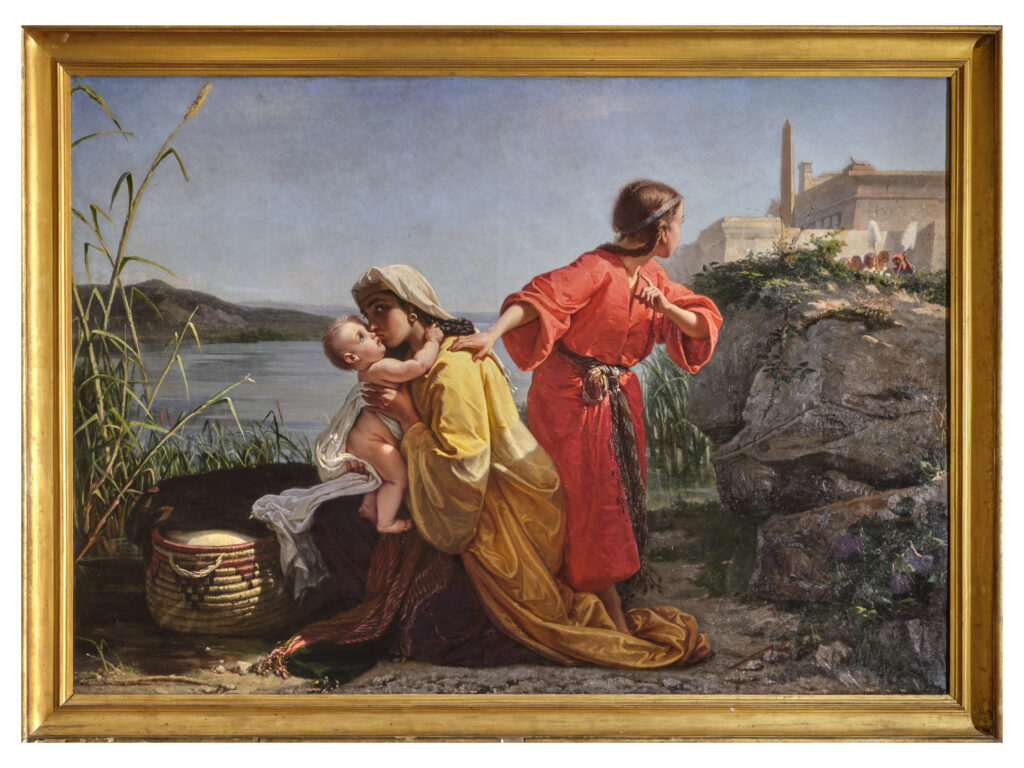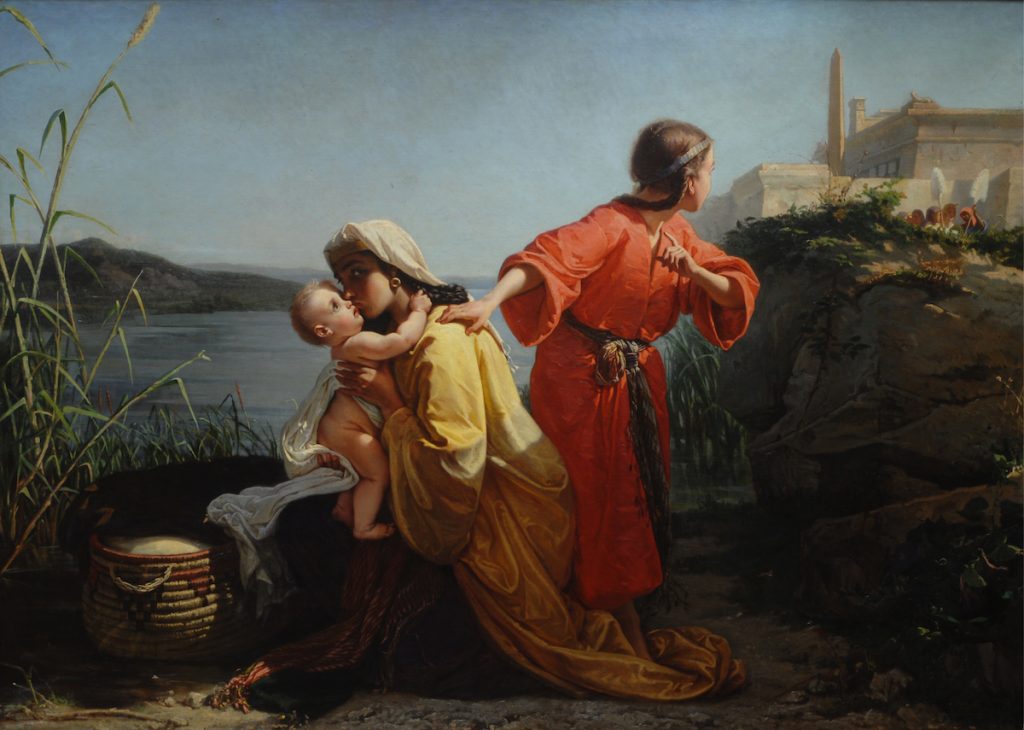GIUSEPPE MANCINELLI
Naples, 1813 – Castrocielo, 1875
Moses abandoned by his mother
oil on canvas, cm 181×255
The canvas depicts an episode from the biblical Exodus: the infant Moses being set adrift in the water of the Nile River to be saved from the pharaoh’s persecution (Ex. 2, 1-3). In the nineteenth century, themes of exoticism and historical reconstruction enjoyed popular success, an example of which is the 1818 premiere of Gioacchino Rossini’s ‘Moses in Egypt’ at the Teatro San Carlo in Naples. Rendered with academic mastery, the splendid figures in the foreground appear to belong to local folklore, while the temple and obelisk depicted on the hill are painted with such realism that one imagines the artist admiring and painting the scene from life. The author of this canvas is Giuseppe Mancinelli. The artist obtained an artistic grant from the Bourbon Kingdom in 1835 in order to pursue his studies in Rome, where he worked with Vincenzo Camuccini, producing paintings that were applauded by critics, such as ‘Tasso at the court of Ferrara’ from 1841 (Naples, Museo di Capodimonte). From 1851, Mancinelli taught drawing at the Academy of Fine Arts in Naples, adhering to a purist form of classicism. Our painting comes from the collection of professor Fausto Niccolini (1879-1965), Neapolitan scholar and historian, as witnessed by a card of the Royal Superintendence of the Galleries of Naples that specifies author and dimensions of the work (“Deposit for the protection from the risks of war, 1940, XVIII”, n. 031″). In a lengthy eulogy dedicated to Mancinelli published in the “Albo Artistico Napoletano” in 1853, the critic Cesare Dalbono recalls that the “Moses” was exhibited at the Real Museo Borbonico in Naples in February 1851, which would bring the painting’s completion around this date. The painting is also mentioned by Capogrossi Guarna as “the Moses abandoned by his mother, of splendid coloring” in the long obituary composed after the artist’s death in 1875.
Pubblications:
“Il Buonarroti”, edited by Capogrossi Guarna, 1879, serie II, vol. X, vol. III, xvi, pp. 96-107.
“Intorno ad alcune opere di Belle Arti esposte nel Real Museo Borbonico nel febbraio del 1851”, edited by Cesare Dalbono, in “Albo Artistico Napoletano”, edited by Mariano Lombardi, Stamperia e Cartiere del Fibreno, Naples, 1853, pp. 38-39.
“La Madre di Mosè. Dipinto in tela di Giuseppe Mancinelli”, edited by R. Colucci, “Museo di Famiglia – Rivista Illustrata”, Vol. 5, no. 2, 9 January 1865, pp. 23-25 (Reproduced as a full-page lithograph at p. 26).


